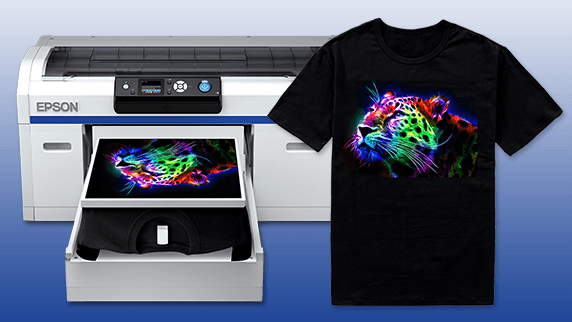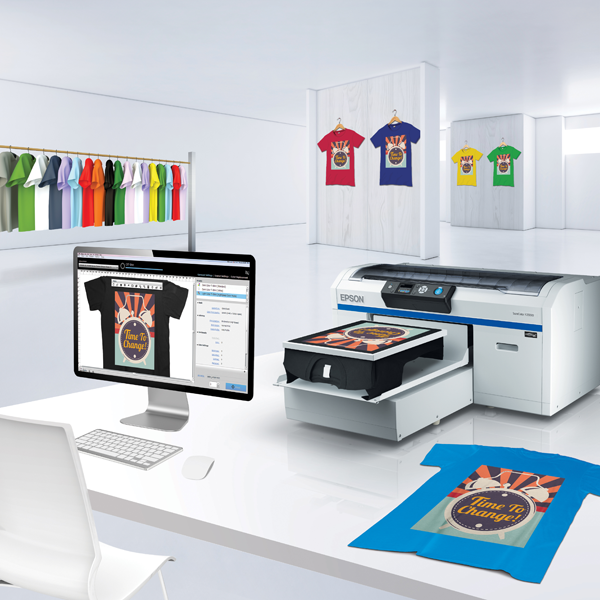Direct to Garment Printing
What is direct to garment printing? It is just putting ink directly onto an item of clothing? What sets it apart from any other form of printing then? Also referred to as DTG and inkjet-to-garment printing, direct to garment printing is the printing of digital images from a computer onto a shirt or other garment through the use of an inkjet printer. And while the name may seem vague, the advantages, disadvantages and ideal uses for DTG are quite specific. Read on to see how it works and whether your project is right for DTG.

Benefits
- No setup costs
- Allows for small orders to be printed at a reasonable price
- Can print extremely detailed images
- Does not charge by the color, making full-color printing affordable
- Ink binds directly to fibers so it feels more like it’s part of the fabric
- Printing Jobs DTG Is Used For:
- Low quantities
- Detailed designs with gradients, shading, or many colors
How it works
DTG is less complicated that you’d expect given that it can capture complicated images so accurately on something as soft as a shirt or sweater. The best way to think of DTG is like at-home printing from your computer, except that the paper is replaced with a shirt. Like your at-home printer, DTG printers do not need to be set up for individual jobs and can render millions of colors. Some DTG printers are even manufactured by companies that make standard inkjet printers (like Anajet, Brother and Epson), but are simply modified to accommodate the additional bulk of garments and use inkjet textile inks, instead of what you buy for your printer at the store. These inks cost upward of $500 per litre, which is why printing on colored garments is so costly; an underbase of white ink has to be laid below the actual colors of your design to ensure that the colors look like you intended. All of this ink adds up!
The process used for translating the colors from the digital image into ink to print onto the garment relies on the CMYK color model. CMYK stands for cyan, magenta, yellow and the key color, which is black. This model is also referred to as four-color processing because it uses combinations of these four ink colors, usually applied in the order in which they appear in the acronym, to create all the colors in the digital design.The inks bind directly to the fibers of the garment’s material, which is why cotton – a fibrous material – is better for DTG printing than polyester – a much smoother material. Once all the colors have been added and the design is complete, heat will often be used to dry the ink. This entire process can take as little as a minute to complete!

How does it compare to:
Screenprinting
Screen printing has an expensive and labor-intensive setup, while DTG has almost no setup at all. This makes DTG more cost effective for “small” orders (less than around ten of a garment) where this cost is not divided between many garments. However, once setup is complete, the per-unit cost of screenprinting is much cheaper than that of DTG (remember that $500-per-litre ink?), which makes it more cost-effective for larger orders. Screenprinting cannot capture as much detail nor as many colors as DTG, but the colors that are screenprinted are more vibrant. Screenprinting also allows for the use of more different types of ink, like metallic or glow-in-the-dark, and can be used on polyester materials that DTG inks cannot bind to.
Heat Transfer
Heat transfers use heat and pressure to embed ink into the surface of the garment’s material, whereas DTG binds directly to a material’s fibers and does not feature a heat component. DTG is a much higher quality printing method than heat transfers.
Dye Sublimation
Both DTG and Dye Sublimation are forms of digital printing, meaning that both translate digital images from a computer onto a garment. The main difference is that dye sublimation uses heat to push ink straight from the solid form to a gas, thus skipping the liquid form that DTG is completed in. The gas that results from the use of heat infuses the material’s fibers and allows for printing on polyester, which DTG cannot do reliably.

